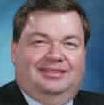Rate of "Disconnected Youth" Increased to 5.8 Million 16-to-24 Year-Olds
Three of the 16 indicators that make up the Opportunity Index relate to education, but the one indicator of those 16 that most closely correlates with a state's or community's overall Opportunity Index score is the one that measures the proportion of what the index calls "disconnected youth"—people ages 16 to 24 who are neither in school nor employed. For the 2013 index, the researchers found 5.8 million "disconnected" 16- to 24-year-olds, out of a total number of 39.7 million. That's 14.6 percent, a slight increase from the 14.5 percent reported in the 2011 index. In 10 of the country's 25 largest metropolitan areas, the proportion of young people considered "disconnected youth" exceeded the national average.
That measure "has a larger impact on a community's opportunity score than any other," says Mark Edwards, executive director of Opportunity Nation. Reducing that proportion is "one of the biggest levers to increase opportunity," says Mr. Edwards. Some of the disconnected youth have dropped out of high school, some are unemployed high-school graduates, and some are victims of a dysfunctional foster-care situation, says Mr. Edwards.
[Click here to read the rest of the story at the Chronicle of Higher Education website.]
